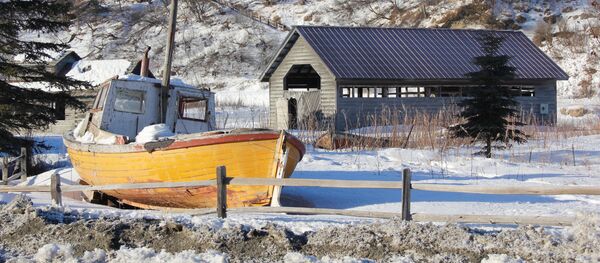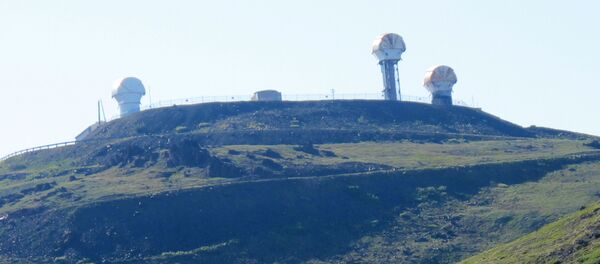Kachemak-Selo, located around 40 miles north-east of Homer, is not easily reachable by car. Once out of the city, the road quickly turns into the narrow rocky serpentine, which later, in turn, is replaced by a single-car unpaved forest trail. The trail weaves through the steep cliffs down toward the village.

Along the route, the weather swiftly changes — heavy snow begins falling from clear Alaskan sky, in an instant thick fog envelopes the mountains. Cell reception is soon lost; the car has to be abandoned at some point, too — in fear that it may not otherwise make it back uphill on the icy road. One’s footsteps echo in the forest silence.
Whereas Nikolaevsk — the first village of Russian Old Believers in Alaska, founded in late 1960s, — has today become a full-blown modern city with a post office, K-12 school, hospital and an Orthodox church — Kachemak-selo has encountered fewer developments since its foundation in 1983.
As the history has it, a group of Old Believers who refused to turn to Christianity — so-called “bespopovets” — left Nikolaevsk in early 80s, shortly after the city built its first Orthodox church. Further pressure came from the US government, which began the process of colonial assimilation in local villages in Alaska, including Nikolaevsk — building American schools, hospitals, roads leading to larger cities.
“Once they built the Church, we picked up and left,” one Kachemak local, Gregory, who as a kid traveled to the village with his family, remembers. Gregory looks like a typical Russian muzhik — traditional Russian kaftan, a type of an overcoat, long grey beard. The style is common among the villagers. Active attempts to preserve the culture include dressing in traditional Russian clothing, speaking Russian, practicing religion. Many read ecclesial books in Russian as a way to keep up with the language.
The village has its own chapel; to this day, all vigils and sermons are conducted in Russian. “We shouldn’t forget the language,” Gregory told Sputnik. “We may live in the foreign land, but we must remember our language.”
Russian is still spoken in the village. Unlike easily accessible Nikolaevsk, relatively isolated Kachemak has managed to better preserve the language and the culture — Americanization has not made its way here, at least to the same extent… yet. “People still speak Russian somehow,” villager Mitrofan says. “They read Slavic.”
Curiously, the preservation of Russian culture and the language is vital for the locals, – somewhat counter-intuitively, given that even the older generation was already born abroad, and the majority of them have never set foot in Russia. They don’t follow the current affairs either. But speaking Russian is crucial for the villagers as a way of self-identification in the foreign land: it’s a part of cultural heritage.







